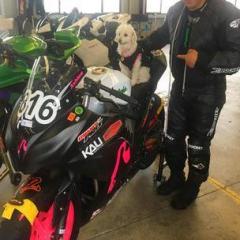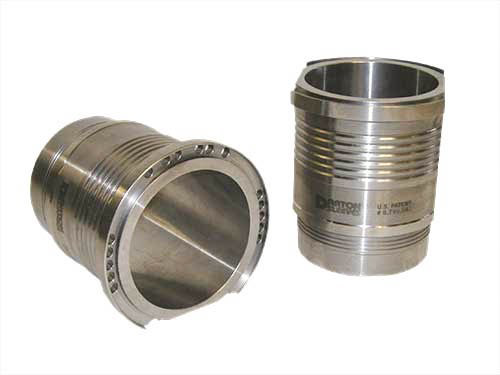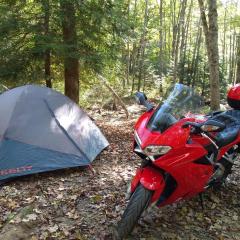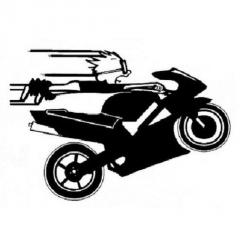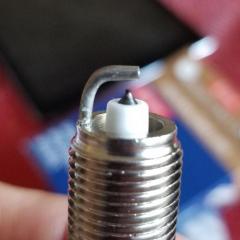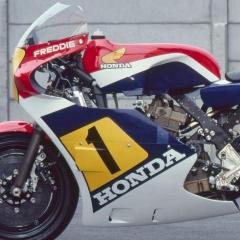Leaderboard
Popular Content
Showing content with the highest reputation on 02/19/2021 in all areas
-
I bought a Shorai battery and Shorai charger for a GSXS1000 a few years ago. Almost $300 total as I recall. Benefit is weight savings and better (purported) charge preservation. Weight better for sure but the battery is higher maintenance than standard lead battery. The bike has about a 6 milliamp parasitic draw which drains the Shorai battery more quickly than my old lead battery and has left me wearing helmet, gloves and a dead bike. The Shorai charger is a bit fragile with delicate connectors for a motorcycle attached device and directions on the device are not entirely clear. Shorai doesn't come out and say their charger is necessary but leaves a seed of doubt for those considering a standard charger for their $200 battery. Bottom line: for bikes where a few pounds matter and you don't mind keeping the charger on the bike, it might be worth it. For me and my basic once a week riding habits, a standard lead battery and once in a while trickle charger does just fine. For whatever it is worth.3 points
-
Be extremely careful with the stuff. Dilute it lots and never leave on for too long! Simple Green doesn't just etch, but causes hydrogen-embrittlement and outright dissolves metal. Discovered this about 20-years ago on bicycle-racing forums where chains soaked in Simple Green comes out cracked with pieces missing!!! When I brought this up to Simple Green, they added warning on their website: https://simplegreen.com/industrial/faqs/ U.S. Army, Air Force and FAA discovered same (planes and helicopter falling out of sky) and issued orders forbidding its use on aircraft. http://www.chinook-helicopter.com/maintenance/issues/cleaners/cleaners.html https://www.jalopyjournal.com/forum/threads/parts-washer-solvent-recommendations.811853/#post-9010627 https://crc.army.mil/MediaAndPubs/magazines/flightfax/2005_issues/ffnovdec05.pdf https://crcapps2.crc.army.mil/warrior_stories/warrior_story.asp?lessonid=2004930-42 https://forum.miata.net/vb/showpost.php?p=925384&postcount=1 http://www.avweb.com/newswire/news0020b.html3 points
-
To handle the rigors of racing Honda's RC45 employs cylinder sleeves made of aluminum power impregnated with Argil alumina and graphite... (note Argil is a composite material of silicon, iron, copper and magnesium) Stock Honda cylinders whether VFR800 or RC45 will meet and exceed our mileage expectations... expect to see over 300K plus miles on 30 grade oil...2 points
-
To be clear, the rubber "lip" on the 87 VFR seal was like 1mm high and 1mm wide. The rest of the seal looked like a normal oil seal. After we trimmed the rubber, it was still a VERY hard interference fit. I would install a correctly sized, quality seal on a 86-87 all day long, and sleep just fine.2 points
-
I've had MMG lithium battery in my CBR600RR for 6-years now without any issues. It's very basic battery without overcharge or over-discharge protection. So I've been very careful about stopping bike and leaving lights on. I haven't used it very much past 3-years. One nice thing is I don't have to trickle-charge it over winter. Last time it sat for 6-months. Started right up on 1st crank VRrrrooommm!!!!1 point
-
And eventually the new 530 (yeah a bit over the top, but same price as the 520) chain arrived. Cut off the old riveted master link and found the problem/s... 1: O rings were not O any more. Totally flat, paper thin, oval. 2: Master link pins - one was close to 0.200", the other about 0.180" - I say about because it was far from a symmetrical cylinder. 3: Roller hole: should be pretty close to the pin size? About enough space to hold a disco on acid. It shouldn't be egg shaped right? 4: Overall chain length longer than new by 0.700" Conclusions - most likely one or both O rings of one pin on master link failed and run dry for some extended period of time. The large clearance of pin and roller hole allowed the chain a considerable degree of movement all 3 dimensions. When the link was engaged on either sprocket the chain length was noticeably shorter (sprocket teeth took up slack of sloppy master link) than when link was not engaged - hence the wildly different chain tensions depending on the position of the master link. I'd say this was a timely discovery of just how bad the master link was. A worn out (stretched) chain will wear out sprockets pretty quick. A failed link potentially will take your leg off at very modest speeds. Best case scenario - it gets spat out the back leaving you stranded with really no easy fixes. Worst case (and more likely) - gets fouled up in the running gear somewhere making a very nasty twisted and broken metal birds nest. Listen to your chain. It should sing sweetly and quietly. As much as you might like heavy metal, this is not a compatible allegory.1 point
-
I have had an SSB Powersport Lithium in my G8 for nearly 3 years. I don’t trickle charge and have never had any issues. It didn’t cost any more than a Yuasa.1 point
-
Very interesting. Unfortunately, I showed my wife (CEO) and now I’ll never be allowed a new bike!1 point
-
Why Yes!!! This is process initially used for Chevy Vega's Reynolds A-390 aluminium blocks from mid-'70s. That had 17% silicon while Porsche's Alusil has 21%. The silicon-faced bores when prepped properly is extremely durable. I've rebuilt many Porsche Alusil engines with +200k-miles that had perfect bores. Just needed some clean-up of ridge on top, install new rings in and that's it! Mercedes and BMW makes extensive use of Alusil blocks. https://www.enginebuildermag.com/2016/04/honing-aluminum-blocks BMW went to Alusil after their Nikasil engines faced untimely demise from higher sulfur content in U.S. petrol. Nikasil is trademarked by Mahle, so NiCom is name used in U.S. Very popular coating for off-road 2T crowd. https://www.uschrome.com/nicom-nikasil-cylinder-coating-and-repair In OP's case, regardless of technologies available, he's going to be very limited due to bore-size. Most likely all of original MMC liners will be removed with that much boring. He'll be limited to using wet-sleeves. For daily-use, I'd recommend ductile-iron sleeves, racing should use chromoly steel sleeves. Darton's MID sleeves were designed for this type of massive over-boring. The sleeves touch on sides, have interlocking top-flanges and reinforcement ridges in middle to increase stability when all of original cylinders are milled away. https://dartonsleeves.com/products/sleeves/mid-sleeves/honda-acura-mid/ Example of this is Porsche's 944 Turbo. Due to lack of factory support, aftermarket tuners have developed hybrid engine builds using Chevy small-block pistons and Mitsubishi 4G63 rods (Starion/Eclipse). "Downgrading" from alloy liners to steel sleeves has not caused any issues, and opened up much more opportunities. Taking stock 221-bhp engine to +650-bhp is simply unheard of in many markets. They've taken over Porsche club-racing as best-value-for-performance model from previous 914/6. Easily beating up on high-end 911 models. With completely mild-mannered daily driving behavior as well. 🙂 http://www.refresh951.com/EngineBuild31.htm1 point
-
So I had a spare 5th gen sprocket cover in the shed and fancied tickling it with the angle grinder. Just for fun... Was going to remove just a bit of material but the grinder got away from me a few times and I ended up taking away more-and-more. There’s not much of it left. In the world of ball gowns this one’s a g-string! Took some material off the back end too. Was going to cut out the marked triangles but decided the chain oil spatter wasn’t worth it. It’s really light compared to the original sprocket cover. Must be worth 15bhp at least although it won’t turn anyone into Valentino Rossi on its own. Not sure how it will play in real life (might be a messy disaster) but there’s enough protection against the sprocket chewing up your shoelaces etc. If you’re going to try this I’d suggest ensuring the grinding is smooth without any sharp bits for cracks to form through vibration. Smooth for the win. And you may want to keep the belly section too. Mine “fell off” when the angle grinder decided to go it’s own way in a moment of inattention...1 point
-
There are many ways to use alloy liners. Porsche's method in '80s is Nikasil coating which puts hard layer of silicon-carbide crystal on surface. For less stringent non-racing applications, they use Alusil. Which is hyper-eutectic alloy with hard silicon crystals embedded. A precise etching/lapping process is used on final-finishing to remove the aluminium from between crystal to leave just hard silicon on surface. In end, you're really at mercy of machine-shop fitting your pistons. No one has manufacturing capabilities rivaling Honda factory, so you'll have to take huge step backwards in technology. Most machine shops can only bore and install steel/cast-iron liners. Which is fine if you've got basic 2618 or 4032 pistons.1 point
-
Factory surface is as near perfect as you can get. Stable expansion with warm-up. Durable with longevity. Good thermal conductivity. Any changes you may want is going to change these properties. Go over possibilities out there and make spreadsheet comparing all pros and cons compared to OEM. With hard-data, we'd have something to discuss. Other thing to consider is compatibility with rings and pistons. Since sliding surfaces has been reversed from traditional alloy pistons sliding in iron/steel bore, you'll want to ensure pistons are iron coated to last in alloy bores. Definitely want to use chrome rings. Mahle, KB and Wossner are extremely familiar with making pistons like this. European cars have had alloy blocks since '80s.1 point
-
I guess I'm in the minority here, but I have to ask. Why? Why must everyone change everything? Can't you just ride the bike and enjoy it? Not trying to be mean or a smartass. I just don't get it. Isn't the vfr is a great bike as is? To be clear, you are not rebuilding a blown engine, you are pulling a perfectly good one out, putting a few thousand bucks into it, then putting it back in?1 point
-
Looking at the FSM, it specs removal of the heads for this job. IIRC it's at least partly due to the rear head overhanging a few of the case bolts. There could be other reasons tho. They're acessible with an end wrench but not with a torque wrench. Anyway, clutch, flywheel and oil pump removal will also be part of it. The journal bolts look to run $10 each with 8 required. Replacement can't be skipped as they stretch and will never again clamp properly. It's a doable project, just requires attention to detail. If you replace the seal from the outside and it leaks, you'll be pulling the motor again to ultimately do this anyway - tough call. If this motor were a little more conventional I'd say splitting would definitely be the way to go. In this instance maybe try to get it in as is and see what happens. In addition to chilling it, maybe a small piston ring compressor could help getting it started.1 point
-
Cold Shrink is not a technique to use on rubber, as it make it hard and brittle. Quite opposite, as making it hot so it becomes soft, playable for ease of installation.1 point
-
Yes, but replace all the other seals and gaskets while you are at it.1 point
-
I have replaced one on a different bike the same way Captain 80's suggested, I think I used ThreeBond 1104 (which is the same as HondaBond, YamaBond etc.) and it is still in there after several years. I felt dirty doing it that way but the engine was in the bike. With the engine on the bench I would split the cases. If you secure the engine upside down you should be able to just pull the bottom off and leave the crank and transmission in place. I have done this before, again not on a vfr. It looks like there is a bearing retainer behind the clutch that bridges the cases so you will have to pull the clutch first. You will have to line up the shift forks when it goes back together, but not a big deal. Good luck!1 point
-
Not smaller but aftermarket like all balls or similar. They most likely would not bother with the lip, cheap enough to try. Shaving might work but I would rather have seal made for interference fit...1 point
-
Not stupid! Just a typical motorcyclist always wanting to muck about with your bike. I’ve headed down similar roads on many occasions.1 point
-
Looking at your new seal tells me it is not intended to be press in but installed when cases are split. As the Captain advises try aftermarket seal if you do not want to go full Honda with tear down.... Reference pic is apparently from 1996 VFR 7501 point
-
A buddy's did his 87 VFR recently. The old seal was a BITCH to get out, very much like yours. The new seal had a very small lip on the rear that appeared to be made to go into a groove when the 2 halves of the cases are mated (or maybe sit behind the machined bore?). The new seal would not fit. He trimmed the lip off, applied a very slight smear of Hondabond, and no issues. Can't tell for sure if that's what's happening with your situation. I had never seen that before, as I haven't had to replace any of my 86 VFRs. I wonder if sourcing a quality oil seal that has the right dimensions, but isn't the "Honda" part, is the route to go when not splitting cases.1 point
-
I was planning on not messing with OP head, but you guys are making me...😇 Evaluating, Honda Engineering did not consider themselves with minor “leak” from the seal but by positively locating it within a case, preventing seal “blow out”. With the rear tire just behind it implications are obvious....0 points
-
That is likely the best fix. Before proceeding, I'd be sure to be very familiar with the reassembly procedure and parts availability - the main journal bolts are a mandatory replacement and require a specific tightening technique. Either way, best of luck with it.0 points
-
Engine is already out and on the bench? Split it and fix it right!0 points

